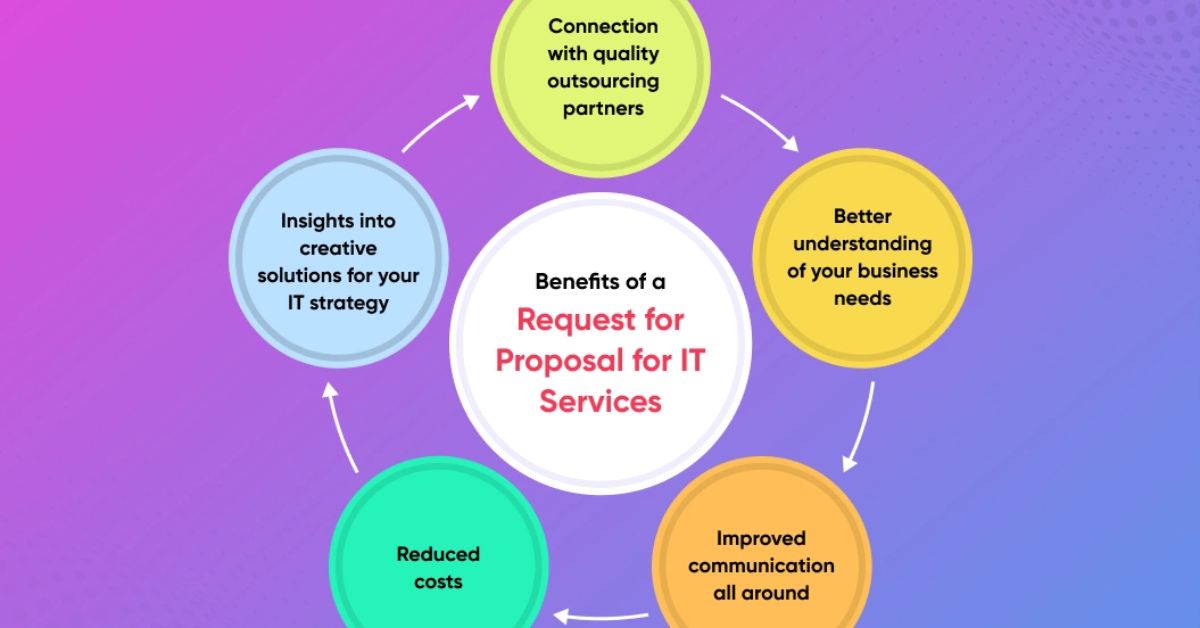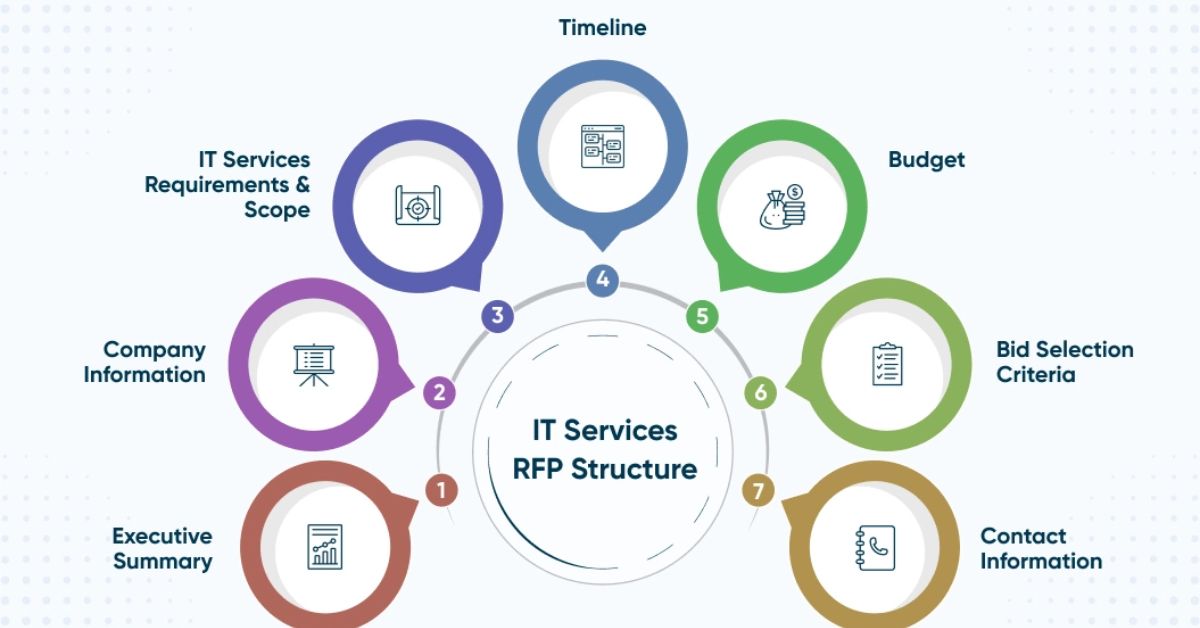In today’s complicated, interconnected world, a strong Information Technology (IT) infrastructure is essential. A Request for Proposal (RFP) might help you find possible vendors if you need a Managed Service Provider (MSP) to handle some or all of your IT needs.
When it comes to outsourcing partners, you have a lot of alternatives, but not all firms that handle managed IT services are made equal. Because different organizations have different expertise, it’s critical to establish your company’s needs and only consider collaborations with those who can meet them.
This blog will help you decide whether an RFP will benefit you in your selection process, and it will provide crucial information to help you create your RFP if you decide to go that route.
Do You Need an RFP for IT Services?
Many businesses issue an RFP merely because it is corporate policy—part of their procurement process—and this isn’t always an acceptable reason. After all, creating RFPs takes time, and there may be other ways to spend your time.
When you’re merely seeking for information and surveying the market, you might be tempted to write an RFP, but you’re usually better off generating a Request for Information (RFI). RFIs will be discussed further below.
Others may consider preparing an RFP when seeking price estimates, comparing existing vendor prices (IT services costs, in this case) with rival pricing in order to negotiate a better bargain. In that instance, an RFP is unnecessary because a Request for Quotation (RFQ) will suffice.
When should an RFP be issued? We’ll go into more detail below, but the simple answer is that you should only draft an RFP for IT services if you have a pretty clear grasp of the difficulties you confront.
Of course, this does not imply that you must be familiar with all of the solutions! In fact, an RFP can be especially useful when you understand the difficulties you’re facing and are open to hearing how vendors can help.
Benefits of a Request for Proposal for IT Services
When implemented correctly, RFPs have numerous advantages. The following are some of the advantages of writing an RFP for IT services.
A few of the benefits of writing an RFP include:
- Selecting high-quality suppliers: An RFP that is written strategically, providing carefully considered selection criteria, will help connect you with quality outsourcing partners.
- Clarity of vision: The RFP process itself can help you better understand your business needs and deliverables, drawing your attention to the best use of your resources.
- Improved communication: Writing an RFP can help you communicate your needs to prospective partners as well as internal teams.
- Reduced Cost: An RFP lets you collect competitive pricing bids from different vendors.
- Insights into solutions: By laying out your service requirements, you can solicit solutions from RFP respondents, giving you greater insights into your IT strategy.
IT Services RFP Structure
Every RFP should include vital features that communicate critical information about your project, company, goals, and what you want from a provider.
Here’s a breakdown of how to structure your RFP for IT Services and what to include in each section.
- Executive summary: Give potential vendors a broad overview of the services you’ll need to solicit from them and what you’re trying to accomplish.
- Company information: Provide your company name, a description of what your company does, what its IT needs are, and what brings you to solicit outside support from IT providers. Include any background information relevant to the project.
- IT Services requirements and scope: Are you looking to outsource your entire IT management? Or are you looking to supplement your in-house team’s work by providing services such as IT support or security? Outline your needs here.
- Timeline: What time-sensitive projects do you have planned, and what are the timelines?
- Budget: What is your budget for IT services?
- Bid selection criteria: What is your evaluation criteria for selecting IT partners? Spell that out in this section so IT companies can highlight their strengths and experience.
- Contact information: Provide a contact name, email, and/or phone number for the point of contact who can answer questions and receive proposals.
How to Issue an IT Services RFP
There is an ideal procedure for releasing an RFP for IT services, and it is not something you want to undertake on the spur of the moment. Meeting with stakeholders in your organization and devising a strategy to ensure you’ve covered all of your bases are required.
The seven steps below will assist you in clarifying your needs, understanding your possibilities, clearly articulating your needs, and reviewing your options before making a decision.
1. Identify your IT needs
What kind of IT services does your organization require? It’s important to identify all your needs before you start writing, that way you can solicit bids from companies that provide those services and have a proven track record.
IT services that companies commonly outsource include:
- Technical support
- IT security
- App modernization
- Data management and remote backup
- System monitoring
- Software licensing and support
- Data analytics (including improving reporting capabilities)
- Device management
- System upgrades
Provide a clear project overview, and consider your needs and your implementation timeframe.
2. Consider creating an RFI first
Are you still trying to wrap your head around the IT solutions your company needs?
The list above might seem intimidating, and if you’re not sure where to begin or which solutions you need, writing and distributing a Request for Information (RFI) can help you figure that out.
3. Draft your RFP
Your RFP should cover all the pertinent details outlined above, from your company information to the types of services you require. Incorporate everything you’ve learned from your stakeholder meetings, along with anything you discovered from your RFI, if you chose to issue one. This stage might require some back-and-forth between different stakeholders, so it often makes sense to use an editable, shared document that facilitates easy collaboration.
4. Finalize and issue your RFP
Getting your RFP right is important, so be sure you’ve got the buy-in from key stakeholders and leadership. Before you send out the RFP to potential vendors, make sure you’ve taken the following steps:
- Get sign-off from all decision-makers
- Establish scoring criteria that you’ll use to evaluate bids
- Identify which potential vendors will receive your RFP
- Ensure there is a process for responding to questions from prospective vendors
5. Review vendor proposals
After you’ve received bids from various vendors and the submission deadline has passed, it’s time to put your scoring system into action. You can use an Excel weighted-criteria matrix to score offers depending on how well they suit your needs.
Obviously, if a vendor has a solid track record in one area but falls short in another, you’ll have to exercise some judgment in selecting your top candidates—so don’t solely base your decision on total ratings.
Put the best candidates on a shortlist and go to the next step.
6. Get more detail from shortlisted vendors
Gather more detailed information from your top vendors, and set up interviews to speak with them directly. Here are a few tips to help you cover the right interview topics.
Be sure to assess each shortlisted vendor for their:
- Technical expertise
- Communication skills (especially important for overseas vendors)
- Experience
- Flexibility and willingness to work with your team
- Willingness to offer new solutions and outside-the-box- thinking
- Any other factors you consider a priority
Check out our ultimate outsourcing checklist for a more detailed list of questions to ask and other steps to take during the RFP process.
7. Award contract
Once you’ve selected a vendor, it’s time to hash out the details and write up contracts. This will often involve Service Level Agreements (SLAs) and other contracts establishing the scope of work, rates, and other pertinent details.
Once everyone has signed on the dotted line, be sure to reach out and let the other shortlisted candidates know you’ve decided. Maintaining a good relationship with your other prospects is ideal, since you may choose to switch vendors down the line.
By following these steps, you will increase your odds of finding an outsourcing partner that fits your needs in terms of experience, flexibility, budget, and expertise.
Till Then, keep yourself updated with all the latest news from our website, techyember.com.


